What Types of Feet There Are
Our feet are very individual, with our left and right feet not being identical. Even so, the shape of your feet might not say much about your ancestry or your personality. However, it can help you to understand what types of shoes you should choose to make your daily life more comfortable. 5-Minute Crafts is going to give you this insight.
❗ This article is for entertainment purposes only. Before taking any action, it’s highly recommended to consult with your medical specialist to receive personalized advice.
I. Types of feet
1. Greek feet
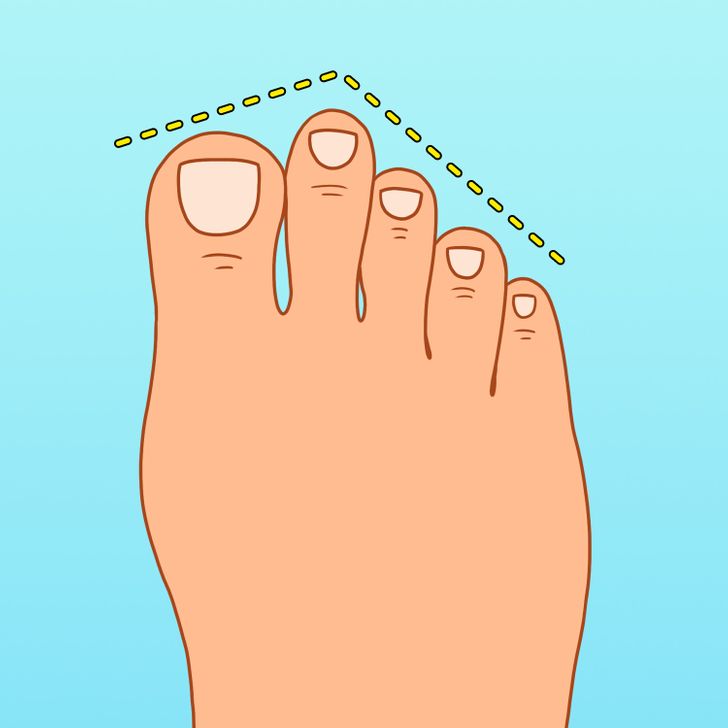
If your second toe is slightly longer than the rest, you have this type of foot. Another name for it is Morton’s toe, and this shape is very common. Some suggest that it can be beneficial to athletes. However, Morton’s toe also affects the way weight is distributed among one’s foot, which can lead to aches.
👣 When buying shoes, make sure you choose the right size. If your longest toe is pressed against the toecap of the shoe, you will feel discomfort and it can even harm your feet. Also, make sure the shoes hold your feet properly and can help you to correct your posture when you walk.
2. Roman feet
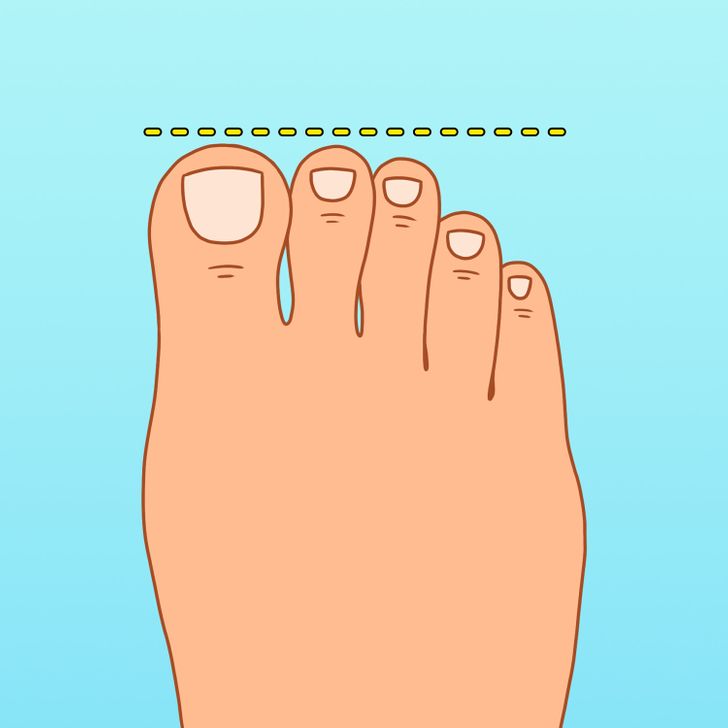
If your first 3 toes are longer and of approximately the same length, and the other two are a bit shorter, you have this type of foot. Usually, the toes of such feet are also broad and the feet are wide. This shape is also known as Giselle’s feet or peasant’s feet.
👣 When buying shoes, opt for those that have a wide shape to provide enough room for your toes. This way, you will make sure they aren’t pressed against each other, preventing deformation and calluses.
3. Celtic feet
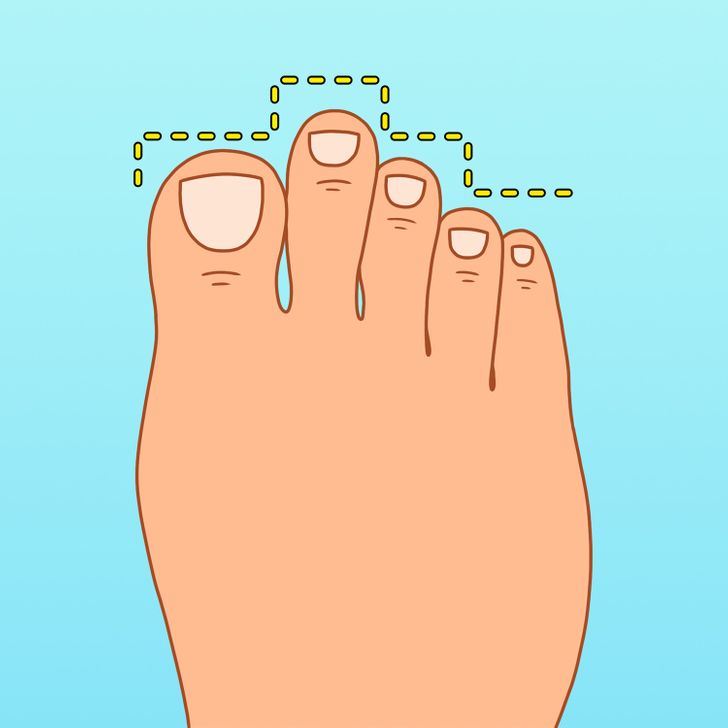
This shape is characterized by toes of different lengths that don’t usually follow a special order. Celtic feet typically have a rectangular shape with large short big toes, the second toes being the longest, and the small toes being slightly longer than the fourth toes.
👣 When buying shoes, opt for rounded shapes to provide extra comfort for your longest toes.
Also, try to avoid pointy and fitted shoes because they can cause pressure to your toes.
4. Germanic feet
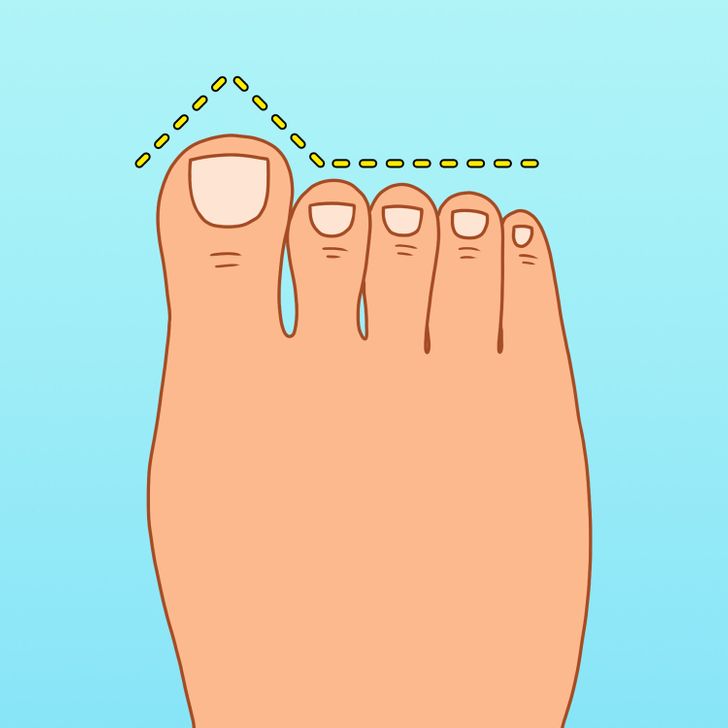
If your big toe is typically bigger, while the rest of the toes are completely straight and of the same size, you have this type of foot.
👣 When buying shoes, opt for wider options that will provide enough room for your toes. This way, you will avoid calluses and aches caused by uncomfortable footwear that’s too tight for you.
5. Egyptian teet
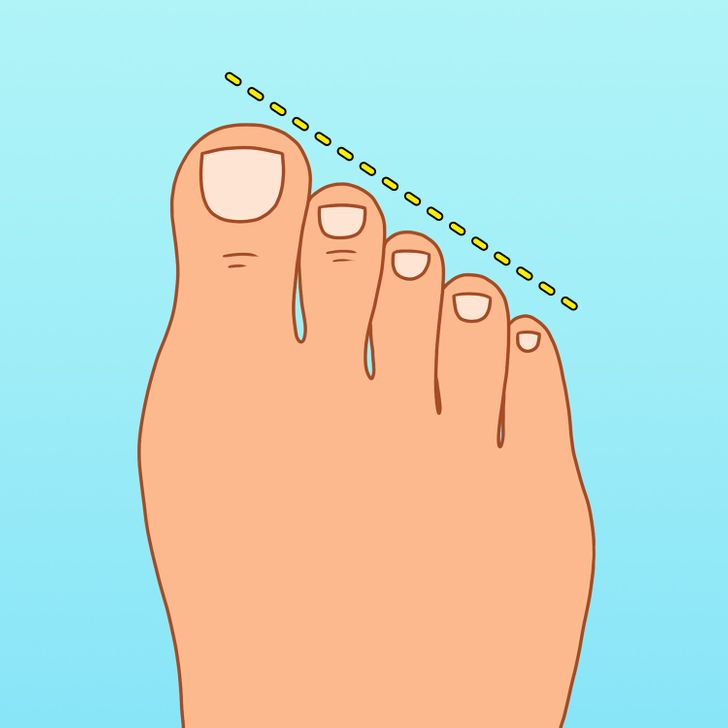
Your toes’ length decreases from the longest to the shortest in a diagonal-like fashion. It is also one of the most common types of feet, and most shoes are designed for them!
👣 When buying shoes, you can opt for footwear with a narrower toecap. However, when wearing them, pay close attention to the way you walk and your posture to avoid bunions or calluses.
II. Types of foot arches
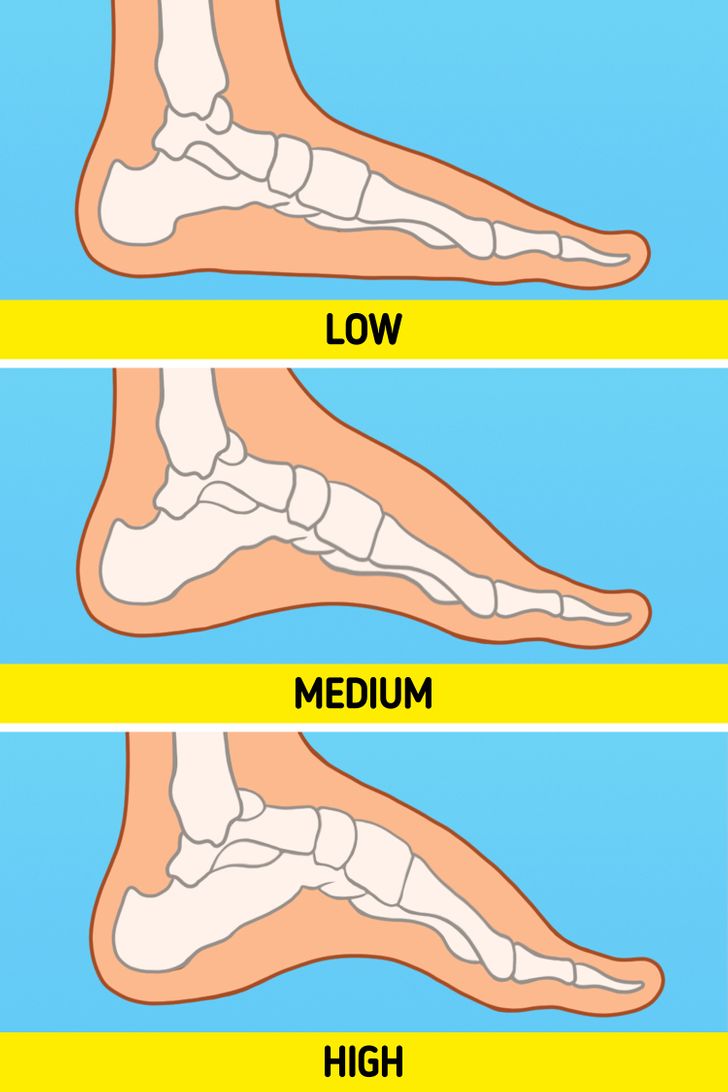
Another very important aspect of your feet is your foot arch, as it supports your body when you move. Moreover, it affects the way your foot moves. If your arch is too high or low, it can make you overuse certain parts of your foot and lead to extra stress in your muscles and joints, which can later cause pain and injuries.
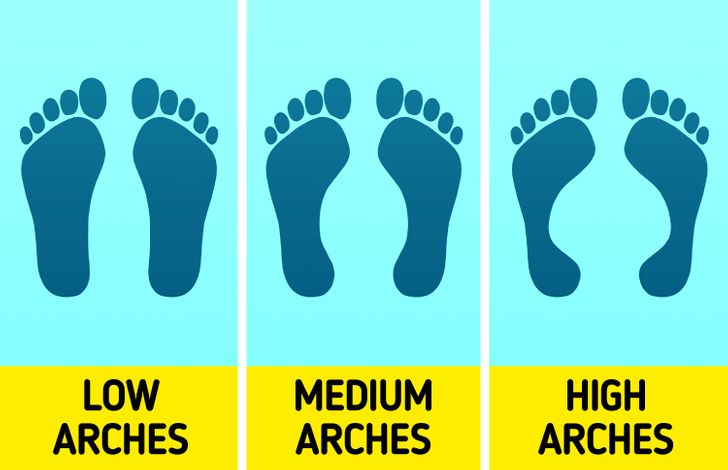
You can measure your arch by wetting your feet and then stepping onto a piece of cardboard or some construction paper.
🦶 The wet print shows the entire bottom of your feet — most likely revealing if you have low or flat arches.
The best shoes for you: Opt for “stability” shoes with dual-density midsoles and supportive “posts” for pronation reduction for firmer support.
🦶 The wet print shows about the half of the middle section of your feet — revealing that you likely have medium arches.
The best shoes for you: Almost any shoes would fit you properly. You can choose stability shoes for moderate arch support as well as neutral-cushioned shoes without additional support.
🦶 The wet print shows just the shape of your toes, your heel, and the ball of your foot — most likely meaning that you have high arches.
The best shoes for you: Choose neutral-cushioned shoes with a softer midsole to encourage pronation.
To make sure you hold your posture correctly to avoid pains, aches, and injuries, make sure you always consult with your medical specialist. They will provide you with proper advice regarding exercises and choosing the right shoes.